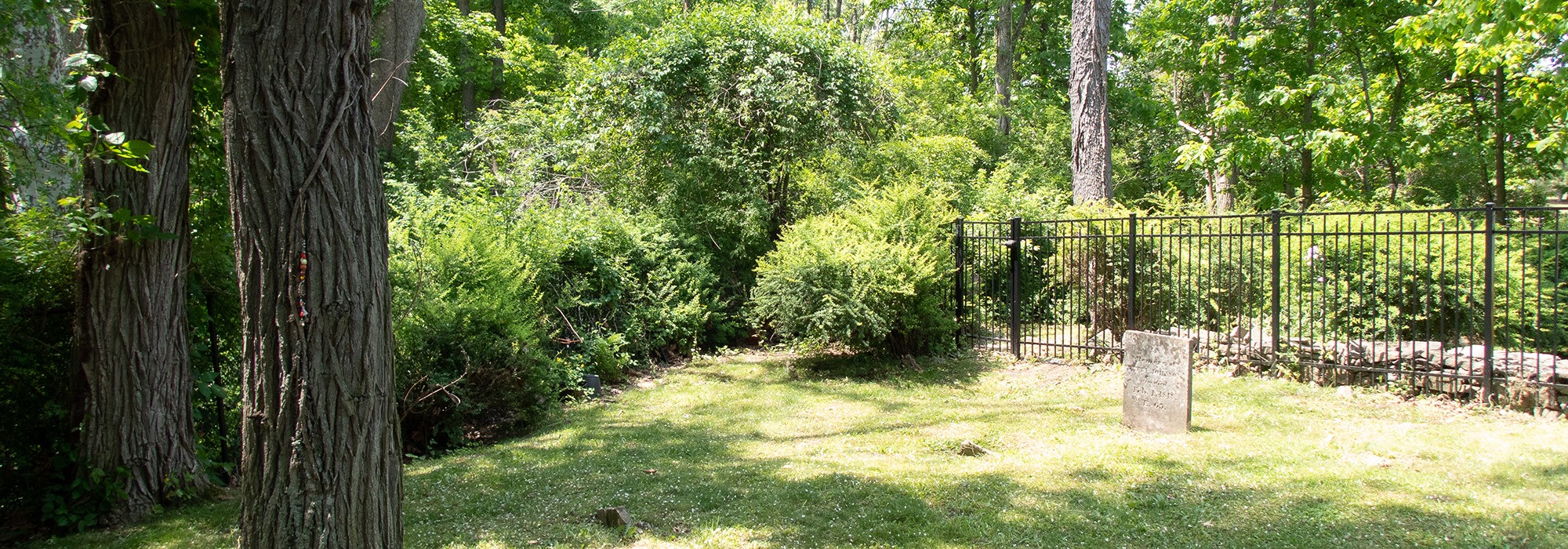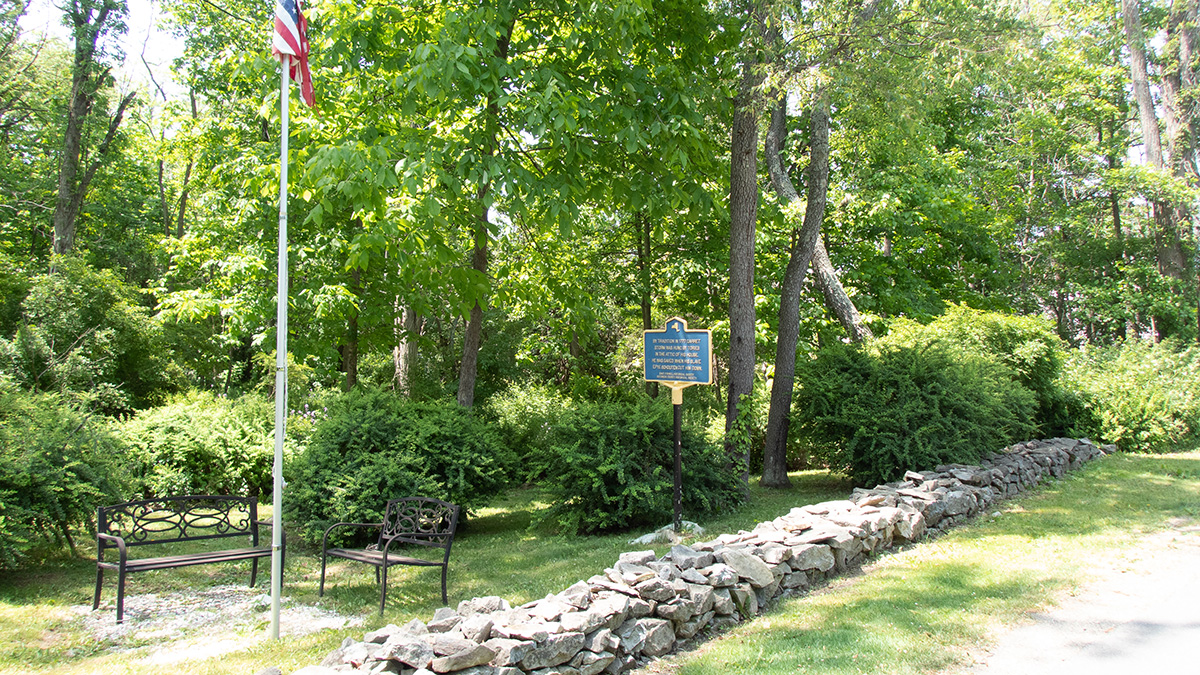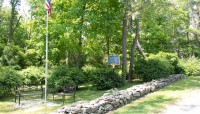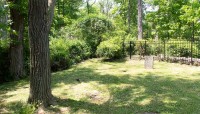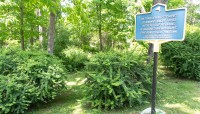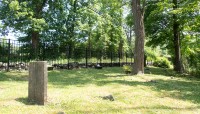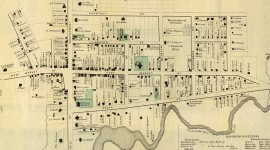Situated less than 200 feet from the western bank of the Fishkill Creek alongside Phillips Road, this .03-acre burial ground holds the remains of approximately 100 African Americans, many of whom were enslaved by members of the prominent Storm family, for whom the hamlet was named. In 1985, after years of neglect and deferred maintenance, a coalition of local organizations rehabilitated the burial ground, clearing encroaching vegetation.
The site, approximately 200 feet long and 50 feet wide, is framed by a metal fence, installed in 2007, with a gate along its western side offering access to the burial ground. Established concurrently, a low, stacked stone barrier, reminiscent of historic fieldstone walls found throughout region, defines the site’s northern edge. Within the fenced area, partially buried rocks and trees, such as locust, maple, and cherry are interspersed throughout. The southern edge of the site is densely wooded and descends toward the sinuous Fishkill Creek. Historically, most graves were marked with wooden crosses, which have since rotted. The only extant carved headstone, found during rehabilitation efforts in a ravine adjacent to the burial ground, honors Betty Johnson, a free African American woman who died in 1848. Purportedly, the burial ground also holds the remains of enslaved woman Eype Shouten, who is reported to have saved the life of her owner, Garret Storm, during the American Revolution. In 2010 a seating area, flagpole, and historical marker were established at the site’s northern end.



